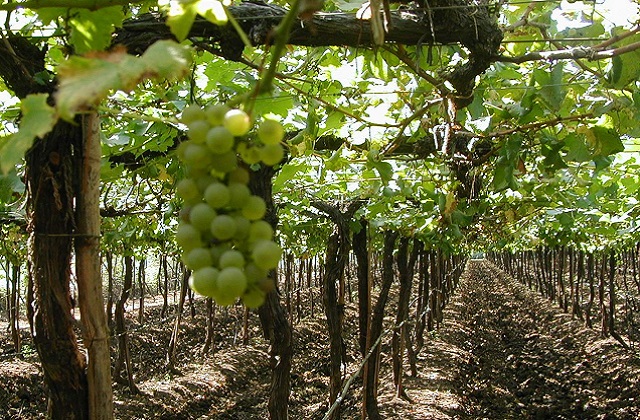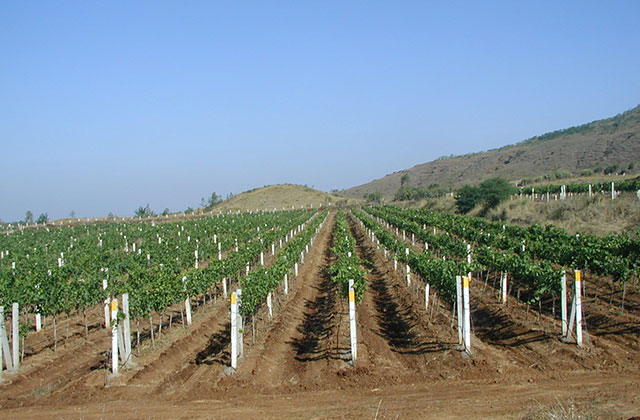Growing wine grapes in India is as easy as growing good quality mangoes in Switzerland. Grape vines normally grow best in the region of 35 to 45 degree latitudes in both the northern and southern hemispheres. The mildly cool climatic conditions in these belts, the inclination of sunlight and the slow ripening of the grapes ensure that the grapes mature fully having the most pure aromas, best flavours, desired tannins and the proper expressions. Though India is a vast country with varied landscapes and lies between roughly 5 and 38 degrees north, the best likely Northern regions are affected by the monsoon and the very cold conditions in the Himalayan foothills.
Unique conditions
The vines in traditional grape growing regions enter a state of dormancy in winter time to rest after the long growing season and the energy reserves help them to again sprout in spring and produce fruit in summer.
In India, the vines continue to grow throughout the year or there might be a very short dormancy period in the extreme north. This reduces the length of the growing season giving very little time for the grapes to reach flavour maturity. Yet, a combination of hilly areas and moderate climate has encouraged many states of India to grow grapes. These include some regions of Punjab, Madhya Pradesh, Maharashtra, Telangana, Karnataka and Tamil Nadu.
Table grapes came to India through Persia and Afghanistan but the modern grape growing started in the 1960s. The grape growing has developed over the last 60 years and with it the unique methods needed to grow them in these hot and dusty conditions.

The monsoon rules
The continuous growth of the vine without any dormancy means that the leaves become old and tired after about 5 months and the vines need to be pruned twice in a year. So theoretically there could be 2 harvests in a year. However, barring a little production in Tamil Nadu where grapes are produced twice in a year, practically elsewhere there is only one harvest annually. This is because the monsoon dominates the other growing season and does not allow any quality fruit to be produced.
The monsoon also pushes the harvest period to spring time and early summer, quite different from autumn harvests elsewhere in the world. The double cycle of growth also shortens the actual growing season reducing the chances of getting full flavour maturity. Some producers are trying to increase this second growth cycle by doing the second pruning a little earlier and also planting early ripening varieties like Tempranillo. The heat and as a result dust during early summer prevents proper functioning of the leaves and affects achieving full sugar maturity. Many late ripening varieties like Cabernet Sauvignon suffer from this phenomenon and are stuck at low sugar levels.

Best regions
The majority of grapes are now grown in Maharashtra, Tamil Nadu and Karnataka. Out of the total grape production, only 2-3% is wine grapes. The big export market drives growth for plantation of table grapes, which can also go easily to the local market. We will go through the important regions producing wine grapes, studying the specific terroir in detail along with the important grape varieties in the next few blogs.
These wine regions lie between 8 and 23 degrees north. The main reason for lower plantation of wine grapes is the lack of encouragement by the states to produce wines mainly due to a myriad of complex regulations and taxes. In spite of the numerous challenges, growers still work to produce quality fruit while wineries numbering fewer than 100 carry on to make good quality Indian wines mainly for the local market and a very tiny quantity is also exported.
Common Terms:
Terroir: The French term that encompasses the very specific conditions existing in a place – the soil, the air, the local topography, the people and the methods employed in growing the grapes and making the wine.
The Soil: Plays an important part in rooting the vines but also controlling the growth of the vines due to its composition and formation over years.
Air: Plays a unique role in blowing away or allowing certain factors of the weather to affect the vines. Humidity, disease pressure, heat or cold conditions and many more parameters get affected by Air flow
Topography: The altitude of the vineyard, its location, proximity to a hill or lake, at the bottom of a valley, centre or the top of the slope – all of these and more have a bearing on the microclimate of the vineyard.
Practices: The philosophy of grape cultivation, traditional methods or employment of new equipment, the picking – manual or by machines, level of sorting grapes and the management of vineyards.

